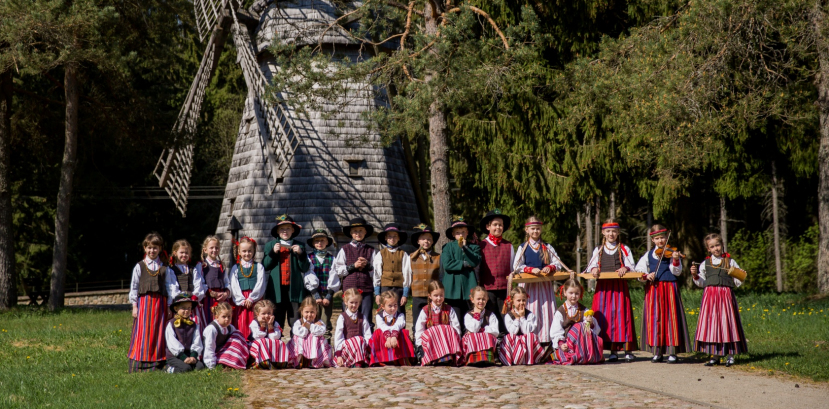Located in the north-western part of the country, in the Samogitian Upland, the town of Telšiai is the capital of one of Lithuania’s five contemporary ethnographic regions. In 1989, in affiliation with the local community centre, Rita Macijauskiene established the ČIUČIURUKS ensemble, which today is one of the most prominent children’s folk ensembles in Lithuania. The ensemble classes are attended by children and youth aged 6-20. In 1999 ČIUČIURUKS was awarded the “Golden Bird,” an annual prize for the country’s best children and youth folk ensemble. Currently, the ensemble’s performing activity includes participation in the local community’s and regional events, as well as regular attendance at international festivals. The ensemble has performed in Finland, France, Turkey, Poland, Spain, the Czech Republic, Estonia, Latvia, Macedonia, Austria, Ukraine, Mexico, Russia, Slovakia, Portugal, Italy, Taiwan, Serbia, Belgium, India, Bosnia and Herzegovina. The ensemble’s repertoire includes traditional Samogitian folk songs, dances and instrumental music. Traditional music used to be an important part of the polytheistic, pre-Christian Lithuania - the rituals were accompanied by musical instruments and singing; songs eulogized heroic deeds and those who did not return from war. Many of those rituals have been preserved till this day. Polyphony is a characteristic feature of Lithuanian folk songs. The lyrics are about nature, animal life, the tragic fate of orphans, a farmer’s hard work, and girls and boys’ delicate feelings. The ensemble’s repertoire also includes lullabies, counting rhymes, as well as numerous kinds of play and games. The majority of the ensemble members learn to play traditional Lithuanian musical instruments, thanks to which they can not only perform Samogitian songs, play, games and dances, but they can also provide their own accompaniment on the violin, dulcimer, bagpipes, mouth organ, „lamzdelis” (a type of flute), bandoneon, kanklės (a type of plcuked stringed instrument), „ryla” (a type of hurdy-gurdy) and basolia. Rita Macijauskiene is the ensemble leader.
ČIUČIURUKS
Edition 2020/2021

